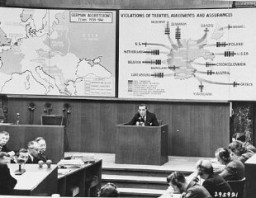You searched for: ���������������������������������������������V���ATV1819���sAlwwH
<< Previous | Displaying results 1-25 of 56 for "���������������������������������������������V���ATV1819���sAlwwH" | Next >>
-
Berga-Elster ("Schwalbe V")
ArticleAt the Berga-Elster subcamp of Buchenwald, prisoners were forced to do dangerous and brutal work in tunnels to support fuel production for the German war effort.
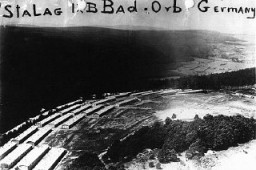
-
V-2 rockets
PhotoSections of V-2 rockets, the so-called Vengeance Weapons, are removed by rail from the Dora-Mittelbau camp after liberation. Near Nordhausen, Germany, June 1945.
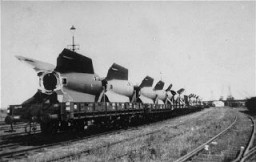
-
Insignia of the 95th Infantry Division
PhotoInsignia of the 95th Infantry Division. The 95th Infantry Division, the "Victory" division, gained its nickname from the divisional insignia approved in 1942: the arabic numeral "9" combined with the roman numeral "V" to represent "95." The "V" led to the nickname, since the letter "V" was universally recognized as an Allied symbol for resistance and victory over the Axis during World War II.
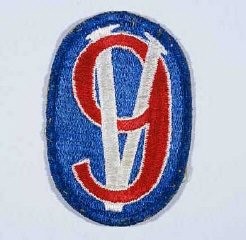
-
The 95th Infantry Division during World War II
ArticleThe 95th Infantry Division participated in major WWII campaigns and is recognized for liberating Werl, a prison and civilian labor camp, in 1945.
-
Liberated inmates of Dora-Mittelbau
PhotoLiberated inmates of the Dora-Mittelbau concentration camp, located near Nordhausen, view an area where camouflaged V-1 and V-2 rocket parts were stored. Germany, after April 11, 1945.
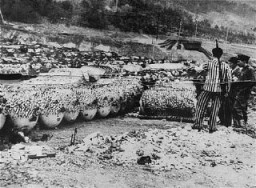
-
Mittelbau Main Camp: In Depth
ArticleLearn about conditions and forced labor in Dora-Mittelbau, the center of an extensive network of forced-labor camps for the production of V-2 missiles and other weapons.
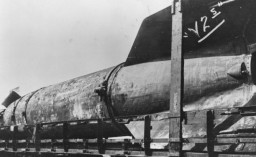
-
Subsequent Nuremberg Proceedings, Case #7, The Hostage Case
ArticleThe Hostage Case was Case #7 of 12 Subsequent Nuremberg Proceedings against leading German industrialists, military figures, SS perpetrators, and others.
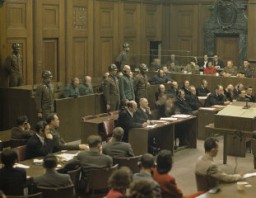
-
Subsequent Nuremberg Proceedings, Case #12: The High Command Case
ArticleThe High Command Case was Case #12 of 12 Subsequent Nuremberg Proceedings against leading German industrialists, military figures, SS perpetrators, and others.
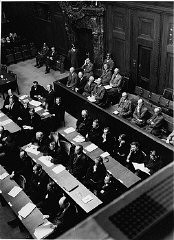
-
Mühldorf
ArticleThe SS established the Mühldorf camp complex in mid-1944 as a satellite system of Dachau to provide labor for the production of the Messerschmitt 262 jet fighter.
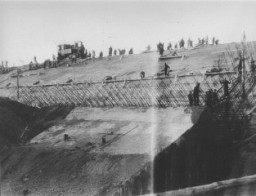
-
Forced labor assembly line at Dora-Mittelbau
PhotoAssembly line where prisoners were forced to manufacture V-bombs at the Dora-Mittelbau concentration camp, near Nordhausen. Germany, April-May 1945.
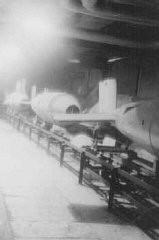
-
US delegation views an underground factory at Dora-Mittelbau
PhotoMembers of a US congressional committee investigating German atrocities view a V-2 rocket on the assembly line of an underground factory at the Dora-Mittelbau concentration camp, near Nordhausen. Germany, May 1, 1945.

-
World War II in Eastern Europe, 1942–1945
ArticleBefore 1942, Nazi Germany had expanded across much of Europe. Learn more about major Allied victories in eastern Europe that led to the German surrender.
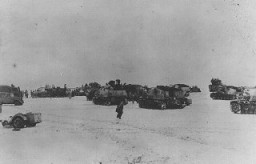
-
Subsequent Nuremberg Proceedings, Case #2: The Milch Case
ArticleThe Milch Case was Case #2 of 12 Subsequent Nuremberg Proceedings against leading German industrialists, military figures, SS perpetrators, and others.
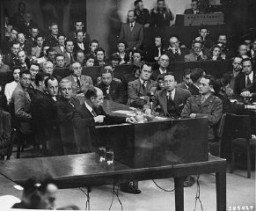
-
Kaufering
ArticleAt the Kaufering complex, part of the Dachau camp system, prisoners were forced to labor under brutal conditions to build underground facilities for German fighter aircraft production.
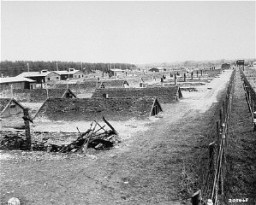
-
Subsequent Nuremberg Proceedings, Case #3: The Justice Case
ArticleThe Justice Case was Case #3 of 12 Subsequent Nuremberg Proceedings against leading German industrialists, military figures, SS perpetrators, and others.
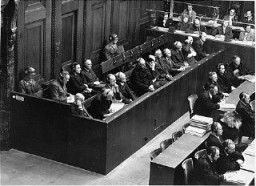
-
Subsequent Nuremberg Proceedings, Case #5: The Flick Case
ArticleThe Flick Case was Case #5 of 12 Subsequent Nuremberg Proceedings against leading German industrialists, military figures, SS perpetrators, and others.
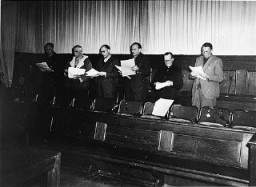
-
Subsequent Nuremberg Proceedings, Case #6, The IG Farben Case
ArticleThe IG Farben Case was Case #6 of 12 Subsequent Nuremberg Proceedings against leading German industrialists, military figures, SS perpetrators, and others.
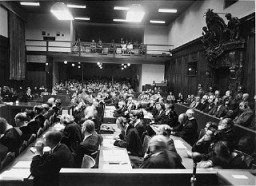
-
Subsequent Nuremberg Proceedings, Case #8, The RuSHA Case
ArticleThe RuSHA Case was Case #8 of 12 Subsequent Nuremberg Proceedings against leading German industrialists, military figures, SS perpetrators, and others.

-
Subsequent Nuremberg Proceedings, Case #10: The Krupp Case
ArticleThe Krupp Case was Case #10 of 12 Subsequent Nuremberg Proceedings against leading German industrialists, military figures, SS perpetrators, and others.
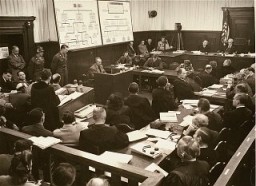
-
The 104th Infantry Division during World War II
ArticleThe 104th Infantry Division participated in major WWII campaigns and is recognized for liberating the Dora-Mittelbau concentration camp in 1945.
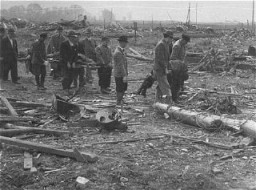
-
Introduction to the Definition of Genocide
ArticleExplore an outline of the main definitional elements of the crime of genocide and how significant aspects of the law have developed through recent cases.
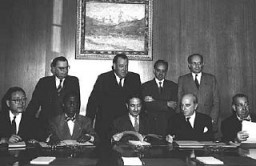
-
Law for the Imposition and Implementation of the Death Penalty
ArticleLearn more about the Law for the Imposition and Implementation of the Death Penalty, which the Nazis enacted after the Reichstag Fire Decree in 1933.
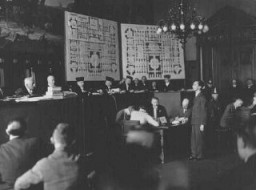
-
Dora-Mittelbau: Overview
ArticleOriginally a subcamp of Buchenwald, Dora-Mittelbau became the center of an extensive network of forced-labor camps for the production of V-2 missiles and other weapons.
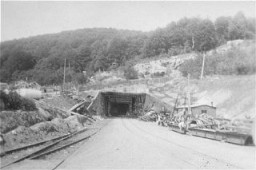
-
Subsequent Nuremberg Proceedings, Case #4: The Pohl Case
ArticleThe Pohl Case was Case #4 of 12 Subsequent Nuremberg Proceedings against leading German industrialists, military figures, SS perpetrators, and others.
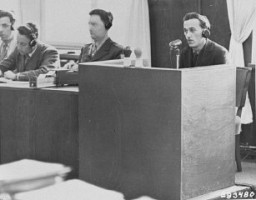
-
Subsequent Nuremberg Proceedings, Case #11: The Ministries Case
ArticleThe Ministries Case was Case #11 of 12 Subsequent Nuremberg Proceedings against leading German industrialists, military figures, SS perpetrators, and others.
